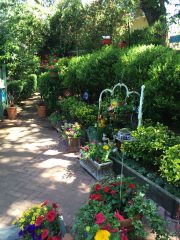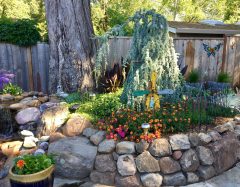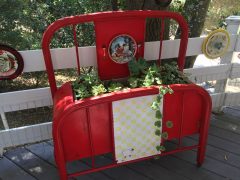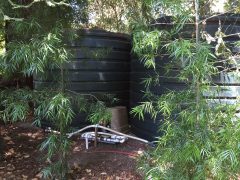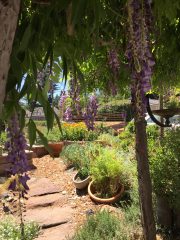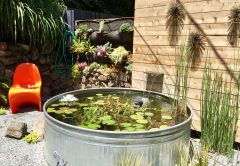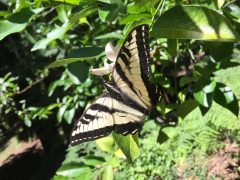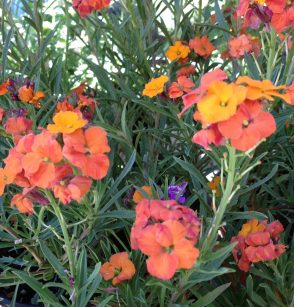The first ?landscape emergency? call came from a homeowner in the Felton Grove neighborhood. She lost 100 feet of fencing this winter during four separate floods. ? I need plants to screen the new wire fencing from the road and I need it fast,? she said.
The next call came from Boulder Creek. A row of pesky acacias had recently been cut down exposing the house to road traffic. This homeowner wanted plants that would fill in quickly, be low maintenance and have low water requirements. Every landscape situation calls for a different solution and there?s one for every garden.
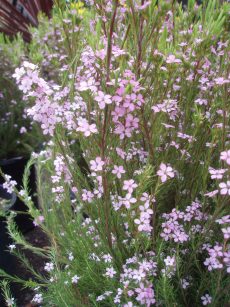
When you plant new shrubs that you plan to turn into a hedge, know what to expect and then let each plant develop in its own way rather than trying to make it into something its not. Any plant can be pruned and trained into any shape but that creates more work than if you selected shrubs than naturally grow into a form that pleases you.
Good shrubs for screening that naturally stay between 6-15 feet include California natives such as ceanothus ?Concha? or ?Julia Phelps?, California coffeeberry and mahonia. Other good performers are westringia ?Wynabbie Gem?, New Zealand tea tree, oleander, pittosporum ?Marjorie Channon?, purple hopseed and escallonia.
Many times a screen may start in the sun but end up in mostly shade. For your sunnier spots why not mix in a few dwarf fruit trees to enjoy, ceanothus and Pacific wax myrtle for the birds, barberry for the beautiful foliage and fall color, spirea, rockrose, escallonia and quince for their bright flowers and fragrant lilacs for cutting in the spring?
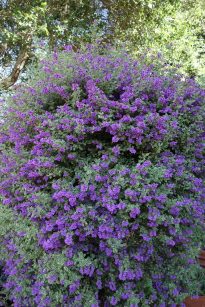
The shadier side can include Oregon grape for fragrant, yellow winter flowers, snowberry for those striking white berries in the fall, oak-leaf hydrangea, viburnum and native mock orange for blossoms in the spring. Loropetalum have beautiful flowers and burgundy foliage while variegated mint bush ( prostanthera o. ‘Variegata’) sport lovely purple flowers and fragrant foliage. Mixed hedges appeal to bees, butterflies and songbirds while also providing flowers, berries and color throughout the year for you to enjoy.
Bare spots in a hedge are caused by old age and repeated shearing without allowing the hedge to grow. The problem can be alleviated by cutting away dead twigs, branch by branch and then shearing outside the last cut next time you prune.
To keep down maintenance, mulch around your plants and install drip irrigation. There won’t be any pruning to do if you choose plants that grow to the height you want.
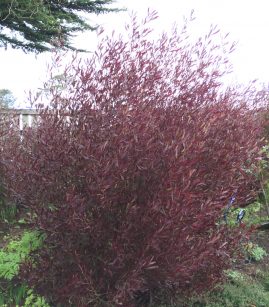
How close should you plant a mixed hedge? Depending on the mature size of the plant, spacing could be from 3-5 feet part If you want a quick, thick screen.This gives them room to breathe and develop their own shapes. Fast growing plants can be space 5-6 feet apart or more and will usually fill in within 5 years.
Provide the best growing environment for the fastest results. By this I mean amending the soil at planting time if your soil is not very fertile. Cover the soil with mulch and fertilize with compost or organic fertilizer. Water deeply when needed especially during the first three years when young plants put on a lot of growth. Formal hedges are fine for some gardens but think of all the added benefits you’ll get planting a mixed hedge.

